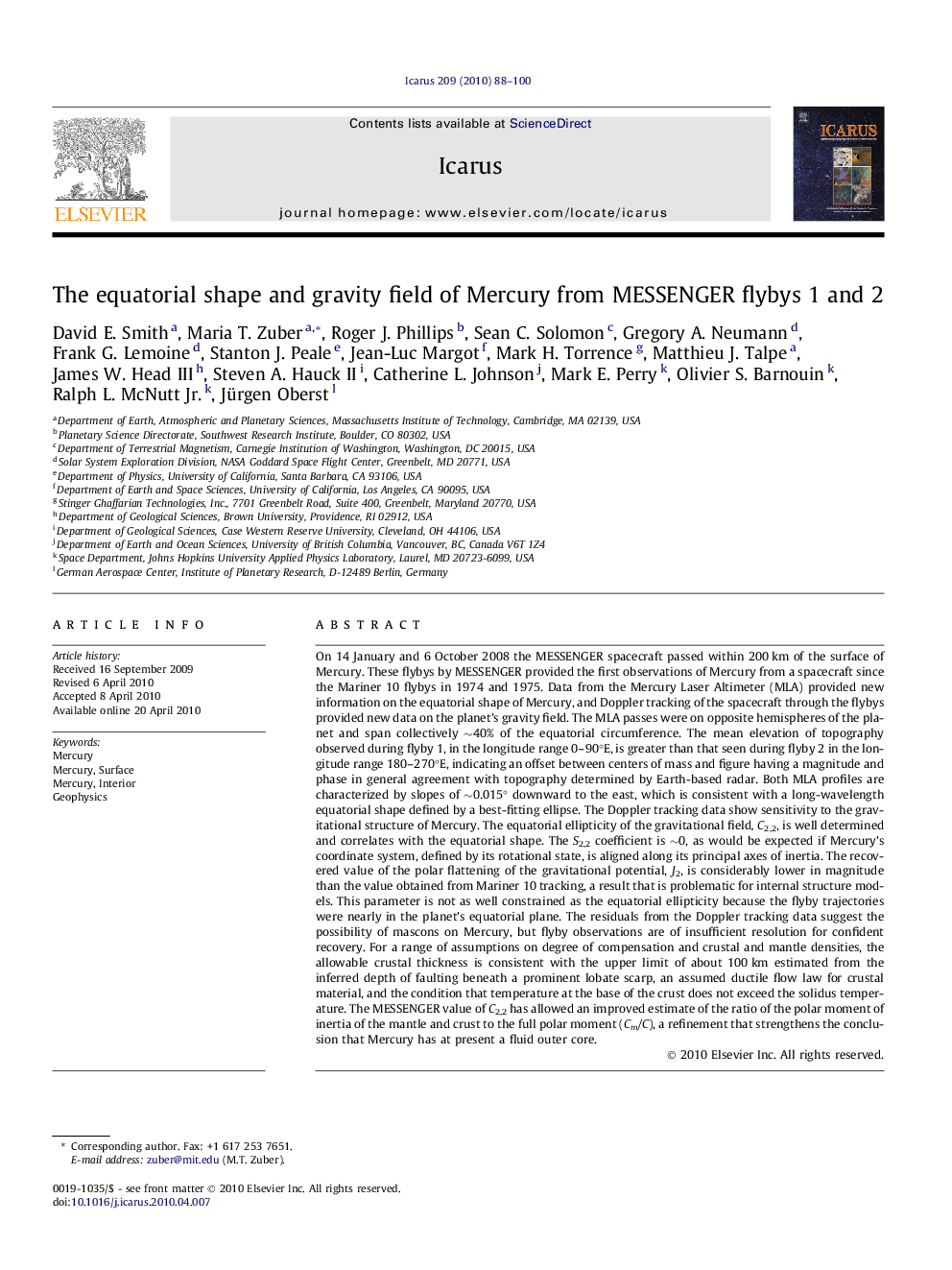| Article ID | Journal | Published Year | Pages | File Type |
|---|---|---|---|---|
| 1774316 | Icarus | 2010 | 13 Pages |
On 14 January and 6 October 2008 the MESSENGER spacecraft passed within 200 km of the surface of Mercury. These flybys by MESSENGER provided the first observations of Mercury from a spacecraft since the Mariner 10 flybys in 1974 and 1975. Data from the Mercury Laser Altimeter (MLA) provided new information on the equatorial shape of Mercury, and Doppler tracking of the spacecraft through the flybys provided new data on the planet’s gravity field. The MLA passes were on opposite hemispheres of the planet and span collectively ∼40% of the equatorial circumference. The mean elevation of topography observed during flyby 1, in the longitude range 0–90°E, is greater than that seen during flyby 2 in the longitude range 180–270°E, indicating an offset between centers of mass and figure having a magnitude and phase in general agreement with topography determined by Earth-based radar. Both MLA profiles are characterized by slopes of ∼0.015° downward to the east, which is consistent with a long-wavelength equatorial shape defined by a best-fitting ellipse. The Doppler tracking data show sensitivity to the gravitational structure of Mercury. The equatorial ellipticity of the gravitational field, C2,2, is well determined and correlates with the equatorial shape. The S2,2 coefficient is ∼0, as would be expected if Mercury’s coordinate system, defined by its rotational state, is aligned along its principal axes of inertia. The recovered value of the polar flattening of the gravitational potential, J2, is considerably lower in magnitude than the value obtained from Mariner 10 tracking, a result that is problematic for internal structure models. This parameter is not as well constrained as the equatorial ellipticity because the flyby trajectories were nearly in the planet’s equatorial plane. The residuals from the Doppler tracking data suggest the possibility of mascons on Mercury, but flyby observations are of insufficient resolution for confident recovery. For a range of assumptions on degree of compensation and crustal and mantle densities, the allowable crustal thickness is consistent with the upper limit of about 100 km estimated from the inferred depth of faulting beneath a prominent lobate scarp, an assumed ductile flow law for crustal material, and the condition that temperature at the base of the crust does not exceed the solidus temperature. The MESSENGER value of C2,2 has allowed an improved estimate of the ratio of the polar moment of inertia of the mantle and crust to the full polar moment (Cm/C), a refinement that strengthens the conclusion that Mercury has at present a fluid outer core.
